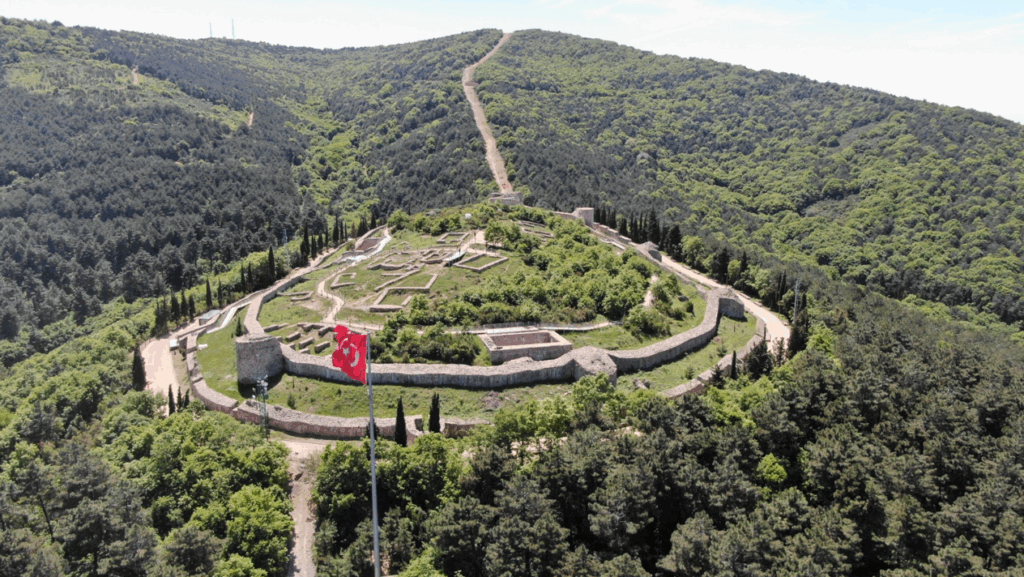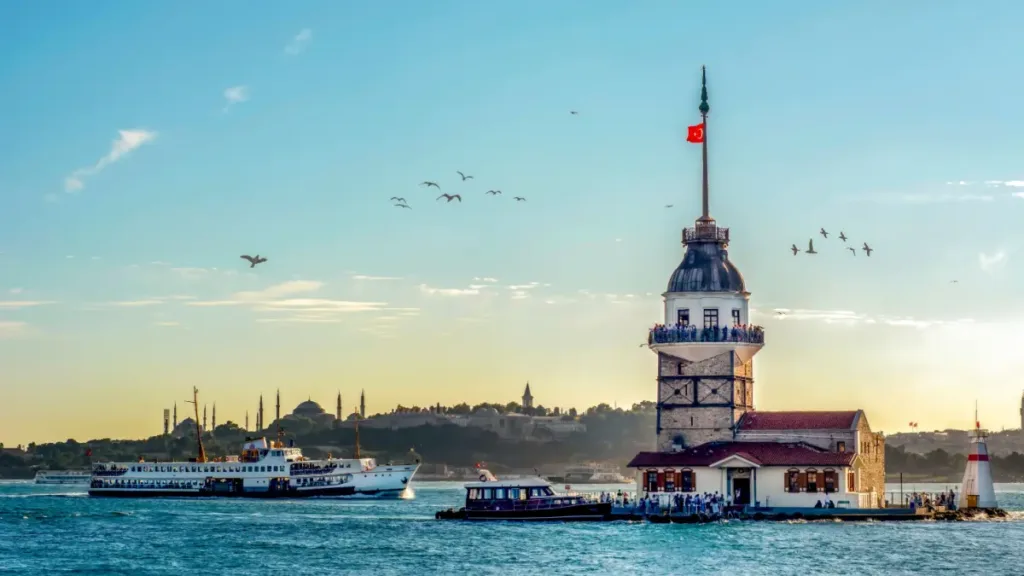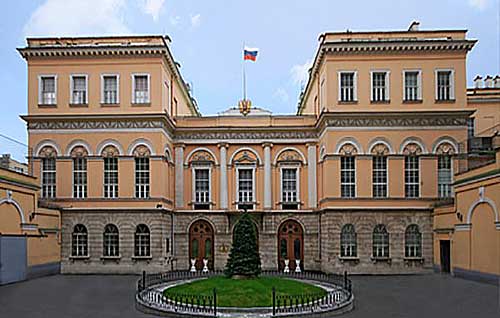
Istanbul, a city that straddles two continents, is a treasure trove of history and culture. Among its many attractions, the historic castle in Istanbul stand out as testaments to the city’s rich and tumultuous past. These fortresses, with their towering walls and fascinating stories, beckon travelers to explore their storied halls and battlements. In this article, we’ll delve into some of the most iconic castles of Istanbul, uncovering the history and allure that make them must-visit destinations.
Table of Contents
The Fascinating World of Turkish Castles
Turkey is home to numerous castles, each with its unique history and architectural style. From the rugged fortresses of the Anatolian heartland to the majestic castles lining the Bosphorus, these structures reflect the country’s diverse cultural influences and strategic importance over the centuries.
Architectural Diversity
The architectural diversity of Turkish castles is a reflection of the various empires and civilizations that have influenced the region. Byzantine, Ottoman, Seljuk, and even Roman elements can be found in the structures across Turkey. This eclectic mix of styles offers insight into the country’s complex history and the different cultures that have left their mark on the landscape. Exploring these castles is like flipping through the pages of a living history book, with each stone and archway telling a story of conquest, defense, and cultural exchange.

Strategic Locations
The strategic importance of these castles cannot be overstated. Many were built on hills or near waterways to maximize their defensive capabilities. These locations not only offered vantage points to monitor enemy movements but also controlled key trade and military routes. The castles lining the Bosphorus, for instance, played pivotal roles in controlling naval traffic between the Black Sea and the Mediterranean. Today, these locations provide breathtaking views, allowing visitors to appreciate the strategic genius of ancient builders while enjoying stunning panoramas.
Cultural Significance
Beyond their military and architectural significance, Turkish castles are cultural landmarks that offer a window into the past. They have witnessed countless historical events, from epic battles and sieges to royal ceremonies and diplomatic negotiations. These castles are repositories of cultural memory, reflecting the values, fears, and aspirations of the societies that built them. Visiting these sites allows travelers to connect with the past and gain a deeper understanding of Turkey’s multifaceted heritage.
Anadolu Hisarı: The Anatolian Fortress
Anadolu Hisarı, also known as the Anatolian Fortress, is one of Istanbul’s most prominent historic castles. Located on the Asian side of the Bosphorus, this fortress was built in 1395 by Sultan Bayezid I. Its primary purpose was to control the movement of ships through the Bosphorus Strait and to prepare for the eventual conquest of Constantinople.

Historical Context
Anadolu Hisarı was constructed during a pivotal time in Ottoman history. Sultan Bayezid I, known for his military campaigns, understood the importance of controlling the Bosphorus Strait. The fortress was part of a broader strategy to isolate Constantinople and cut off its supply routes. By building Anadolu Hisarı, the Ottomans demonstrated their growing power and ambition to expand their territory, laying the groundwork for future conquests.
Architectural Features
Despite its relatively small size, Anadolu Hisarı boasts impressive architectural features. The fortress is characterized by its robust stone walls, designed to withstand sieges and attacks. The central keep, a hallmark of early Ottoman architecture, offers commanding views of the Bosphorus. The blend of Byzantine and Ottoman styles is evident in the fortress’s design, showcasing the transition from Byzantine influences to the distinctive Ottoman aesthetic. Visitors can explore the remains of the fortress and imagine the bustling activity that once took place within its walls.
Modern-Day Significance
Today, Anadolu Hisarı is a popular tourist attraction, drawing visitors interested in history and architecture. The fortress is well-preserved, allowing travelers to walk through its ancient corridors and imagine the lives of those who once defended its walls. Its location along the Bosphorus offers a picturesque setting, making it a favorite spot for photographers and history enthusiasts alike. Anadolu Hisarı serves as a reminder of Istanbul’s strategic importance and the enduring legacy of the Ottoman Empire.
Roumeli Hissar: The European Sentinel
On the European side of the Bosphorus stands another iconic fortress, Roumeli Hissar, also known as the European Fortress. Commissioned by Sultan Mehmed II in 1452, this castle was instrumental in the successful siege of Constantinople. Its construction was a masterstroke of military strategy, effectively cutting off aid to the besieged city from the Black Sea.
Construction and Strategy
The construction of Roumeli Hissar was a remarkable feat of engineering and strategic planning. Sultan Mehmed II, determined to conquer Constantinople, recognized the need to control the Bosphorus. The fortress was built in just four months, a testament to the Ottoman Empire’s resources and determination. Its strategic placement ensured that any ships attempting to aid Constantinople would be intercepted, isolating the city and contributing to its eventual fall.

Architectural Marvels
Roumeli Hissar is renowned for its massive walls and towers, which stretch over 250 meters. The fortress features multiple towers and bastions, each with its unique design and purpose. These structures were designed to withstand attacks and provide optimal defense against enemy forces. The fortress’s architecture reflects the Ottoman Empire’s military prowess and its ability to adapt and innovate in response to changing warfare tactics. Visitors can explore the towers and enjoy panoramic views of Istanbul and the Bosphorus, gaining a deeper appreciation for the fortress’s strategic significance.
Cultural and Educational Role
Today, Roumeli Hissar serves not only as a historical site but also as a cultural and educational landmark. The fortress is home to various cultural events and activities, offering visitors a chance to engage with Istanbul’s rich history. Educational programs and guided tours provide insight into the fortress’s role in the Ottoman conquest and its impact on the region’s history. Roumeli Hissar stands as a symbol of Istanbul‘s resilience and the enduring legacy of its past.
Aydos Castle: A Hidden Gem
For those seeking a more off-the-beaten-path experience, Aydos Castle is a hidden gem located on the outskirts of Istanbul. Perched atop Aydos Hill, this lesser-known fortress dates back to Byzantine times and played a crucial role in defending the region from various invaders.
Historical Background
Aydos Castle has a long and storied history, with roots tracing back to the Byzantine Empire. It was constructed as a defensive stronghold to protect the region from invading forces. Over the centuries, the castle saw numerous battles and sieges, each leaving its mark on the structure. Despite its turbulent past, Aydos Castle remains a testament to the resilience of those who defended it and the strategic importance of its location.

Natural Beauty and Scenic Views
Nestled amid lush forests, Aydos Castle offers a serene escape from the hustle and bustle of Istanbul. The surrounding natural beauty provides a tranquil setting for visitors to explore the ruins and enjoy a peaceful retreat. Hiking trails lead to the castle, offering opportunities for outdoor enthusiasts to immerse themselves in nature while discovering the site’s historical significance. The panoramic views from the hilltop are breathtaking, providing a perfect backdrop for a leisurely picnic or a moment of reflection.
Preservation Efforts
Efforts are underway to preserve and restore Aydos Castle, ensuring that its historical and cultural significance is maintained for future generations. Local authorities and heritage organizations are working to protect the site and promote its unique story. These preservation efforts are vital in safeguarding the castle’s legacy and ensuring that visitors can continue to explore its ruins and appreciate its historical importance.
The Mythical Castle in the Sea: Maiden’s Tower
No exploration of Istanbul’s castles would be complete without mentioning the Maiden’s Tower, also known as Kız Kulesi. This iconic structure is located on a small islet at the southern entrance of the Bosphorus and has served various purposes throughout its long history, including as a lighthouse, a quarantine station, and a customs control point.

Legends and Myths
The Maiden’s Tower is steeped in legend and folklore, with tales that have captivated generations. One of the most famous stories tells of a Byzantine emperor who built the tower to protect his daughter from a prophecy that foretold her death by a snakebite. While the legend adds an air of mystery to the tower, it also highlights the cultural significance of storytelling in preserving historical sites. These myths continue to intrigue visitors and contribute to the tower’s allure.
Architectural and Historical Significance
Throughout its history, the Maiden’s Tower has undergone numerous transformations, reflecting its changing roles. Its architecture combines elements of Byzantine, Ottoman, and modern styles, showcasing the tower’s adaptability and resilience. The tower’s strategic location at the entrance of the Bosphorus made it a vital point for controlling maritime traffic, and it has played a crucial role in the city’s defense and trade. Visitors can explore the tower’s interior and learn about its multifaceted history through exhibits and displays.
Modern-Day Attractions
Today, the Maiden’s Tower is a popular tourist destination, offering a unique blend of history, culture, and entertainment. Visitors can take a boat ride to the islet and enjoy a meal at the tower’s restaurant while taking in panoramic views of Istanbul and the sea. The tower also hosts cultural events and exhibitions, providing a dynamic and engaging experience for all who visit. The Maiden’s Tower stands as a symbol of Istanbul’s rich cultural heritage and its enduring connection to the sea.
The Enigmatic Russian Castle
In the heart of Istanbul lies a lesser-known curiosity, the so-called “Russian Castle.” Though not a castle in the traditional sense, this historic building has a unique story. Built in the early 20th century by a Russian architect, it served as a residence and meeting place for Russian émigrés fleeing the Bolshevik Revolution.
A Refuge for Emigrants
The Russian Castle served as a sanctuary for Russian émigrés who fled to Istanbul during the tumultuous period following the Bolshevik Revolution. This building became a hub for the Russian community, offering a place of refuge and solidarity for those displaced by political upheaval. The stories of the people who sought shelter here add a human dimension to the castle’s history, reflecting the broader themes of migration and resilience.

Architectural Intrigue
The Russian Castle’s architecture is a fascinating blend of Russian and Ottoman influences. Designed by a Russian architect, the building’s eclectic style sets it apart from other structures in the area. Its distinctive features, such as ornate facades and intricate detailing, reflect the cultural exchange between Russia and Turkey during this period. Exploring the castle offers a glimpse into the architectural innovation and creativity that emerged from this unique historical context.
Cultural and Historical Legacy
While it may not have the grandeur of Istanbul’s other castles, the Russian Castle offers a unique perspective on the city’s multicultural past. It stands as a testament to the diverse communities that have called Istanbul home and the rich tapestry of cultures that have shaped the city. The castle’s intriguing history and architecture make it a fascinating stop for those interested in exploring lesser-known aspects of Istanbul’s heritage.
Preserving the Legacy of Istanbul’s Castles
As Istanbul continues to grow and modernize, preserving its historic castles has become increasingly important. These structures are more than just architectural marvels; they are tangible links to the city’s past, offering insight into the events and people that shaped its history.
Restoration and Conservation Efforts
Efforts to restore and conserve Istanbul’s castles are vital in safeguarding their historical and cultural significance. Government initiatives and private conservation projects are working to protect these structures from the ravages of time and urban development. These efforts involve not only physical restoration but also the promotion of public awareness about the importance of preserving cultural heritage. Through these initiatives, Istanbul’s castles can continue to be appreciated by future generations.
Educational and Cultural Initiatives
Educational programs and cultural initiatives play a crucial role in preserving the legacy of Istanbul’s castles. Schools and universities often collaborate with heritage organizations to offer educational tours and workshops, allowing students to engage with history in a hands-on manner. Cultural events and exhibitions held at these sites provide opportunities for the public to connect with the past and gain a deeper understanding of the city’s rich heritage. These initiatives help foster a sense of pride and ownership in preserving Istanbul’s cultural treasures.

Challenges and Opportunities
Preserving Istanbul’s castles presents both challenges and opportunities. Urban development and environmental factors pose threats to these historic structures, requiring ongoing efforts to address these issues. However, the growing interest in cultural tourism offers opportunities to promote and sustain preservation efforts. By highlighting the unique stories and significance of Istanbul’s castles, stakeholders can attract support and resources to ensure their continued protection and appreciation.
Conclusion
The historic castles of Istanbul offer a captivating journey through time. From the strategic fortresses guarding the Bosphorus to the mysterious Maiden’s Tower, each castle has a unique story to tell. Whether you’re a history enthusiast, an architecture aficionado, or simply a curious traveler, these castles are sure to leave a lasting impression and deepen your appreciation for Istanbul‘s rich and diverse heritage.
FAQs
1. What are the main castles in Istanbul?
The most famous castles are Rumeli Fortress (Rumeli Hisarı) and Anadolu Fortress (Anadolu Hisarı), both located along the Bosphorus.
2. Where is Rumeli Fortress located?
Rumeli Fortress is on the European side of Istanbul, near the Fatih Sultan Mehmet Bridge.
3. Can I visit these castles?
Yes, Rumeli Fortress is open to visitors and serves as an open-air museum. Anadolu Fortress can be viewed from outside, but may have limited access inside.
4. Is there an entrance fee?
Yes, a small fee is required to enter Rumeli Fortress. Anadolu Fortress is usually free to view from outside.
5. What’s the best time to visit the castles?
Spring and autumn are ideal due to pleasant weather. Early mornings are great to avoid crowds.
6. How old are these castles?
Both castles were built in the 14th–15th centuries by the Ottomans, primarily for military purposes during the conquest of Constantinople.
7. Are guided tours available?
Yes, guided tours are available through local travel agencies or as part of Bosphorus cruise packages.
8. What can I see at Rumeli Fortress?
Visitors can explore the towers, walls, and enjoy incredible views of the Bosphorus and Asian side of Istanbul.
9. How do I get to Rumeli or Anadolu Fortress?
You can take public buses, taxis, or Bosphorus cruises that stop nearby. Rumeli Fortress is also reachable via metro and a short walk.
10. Are the castles family-friendly?
Yes, but be cautious on steep steps or high walls. Supervision is recommended for children.

